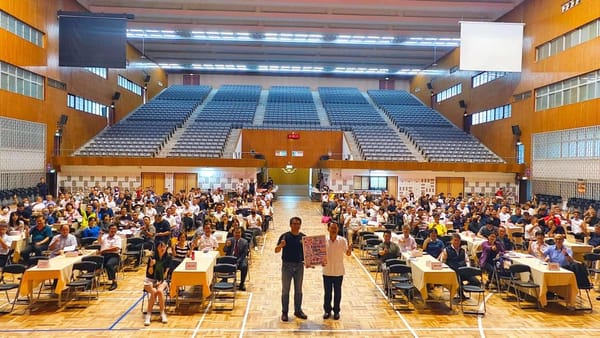PBL (1) Gamification- Point, Badge, leaderboard

Applying the core elements of games in non-gaming environments is what we call "gamification" (Deterding, Khaled, Nacke, & Dixon, 2011; Huotari & Hamari, 2012… Yes, I really do read!). Therefore, gamification is not a game, it's not computer-aided instruction, and it's not so-called situational simulation (like flight simulation). The focus of gamification is to extract the crucial elements that make games fun, apply them to different domains, to increase user engagement, stimulate investment, and even boost performance. (As this isn't an academic paper, I will forego further citations).
So, can corporate education and training programs really be combined with gamification? Many corporate training programs are not only professionally content-heavy, but the learners are professionals themselves. Can gamification really impact this group of corporate executives and increase their participation and investment? The answer, of course, is a resounding: Yes!
Without personal experience, you might find it hard to believe: a vice president of a publicly listed company, while being in the same group as the director and managers in the early stages of a course, exclaimed, "Let's do our best, and I hope to bring this building block home for my son to play with!" (Everyone felt the pressure instantly). It's also hard to believe that HR said their engineers always had a dull atmosphere in their classes but would fiercely compete and eagerly raise their hands for extra points. And during the breaks of each class, groups would gather around the scoreboards to discuss the latest standings. These behaviors from the participants were beyond what HR could have imagined, and they would often ask me, "Teacher, do you have some kind of magic? Why do our engineers become so engaged and participate so actively?"
It's not magic; I simply incorporated three core elements of gamification into the course: P.B.L.!
I meticulously designed the gamification of the curriculum!
Following the explanation in the book "Practical Gamification" by Zhou Yuka (2017), the three core elements of gamification, P.B.L., refer to points, badges, and leaderboards. However, based on my practical experience, I decided to change badges into benefits. So, in the FuGe edition of gamification, P.B.L. stands for points, benefits, and leaderboards (Wang Yongfu, 2018... Please remember the citation XD). Now, let's delve into how to implement the three elements of gamified P.B.L. in the curriculum:
Points
The first fundamental aspect of gamification is the points-based scoring mechanism. Every answer, participation, and performance by the participants should be rewarded with points. For example, raising your hand to answer earns you +1000 points, being the first group to stand on the stage earns you +5000 points, being the top scorer in a practice session earns you +20000 points, and so on.
You might be wondering, does this really work? After all, we're not dealing with children here, right? Well, it's the same story as before—without firsthand experience, without witnessing the power of gamification. Let's take the example of earning +5000 points for being the first group to take the stage. As soon as I asked, "Which group will go up first?" before I even finished speaking, there was a swift response from the audience with many hands shooting up! (Even the HR team was amazed! Are these really our participants? How is this possible?) In the past, everyone used to hesitate and avoid taking the stage, but now it's a race to be the first.
There are various methods for scoring, ranging from the simplest option of having groups keep score themselves (which may sometimes result in inaccurate or miscalculated scores), having assistants handle the scoring (more efficient but busier), having groups take turns to calculate scores (where one person is responsible for calculating the entire class's score in each session, ensuring fairness and minimizing issues). Alternatively, physical scoring items like playing cards, fake money, or chips can be used (although smooth distribution and tracking the total count are challenges that need to be considered).
Of course, there are certain considerations when it comes to managing points. For example, every participation should be rewarded with points (encouraging engagement, regardless of whether the answer is correct or the performance is good). Only adding points and not deducting them (punishment doesn't contribute to better performance). The teacher should have fair standards for awarding points (the game should be fair to be enjoyable). Differential scoring should be implemented (more difficult questions or challenges should have higher scores). Moreover, teachers should broaden their perspective and ensure that everyone and every group has opportunities to earn points. These are key points to consider when implementing the scoring system.
Conclusion
At this point, you might be wondering, what are these points we're competing for in class? What can they be used for? Of course, points are not useless; they can be redeemed for benefits. This brings us to the second core of gamification: Benefits. We'll discuss this in our next article.
Note 1: The term "gamification" emerged in 2008 and gained widespread discussion after the introduction of the FourSquare check-in app in 2010. However, our application of these concepts in the curriculum predates this by a significant margin. It was referred to as "team motivation strategies" back then, not gamification.
Note 2: Do you like this article? Let me know your opinion!




